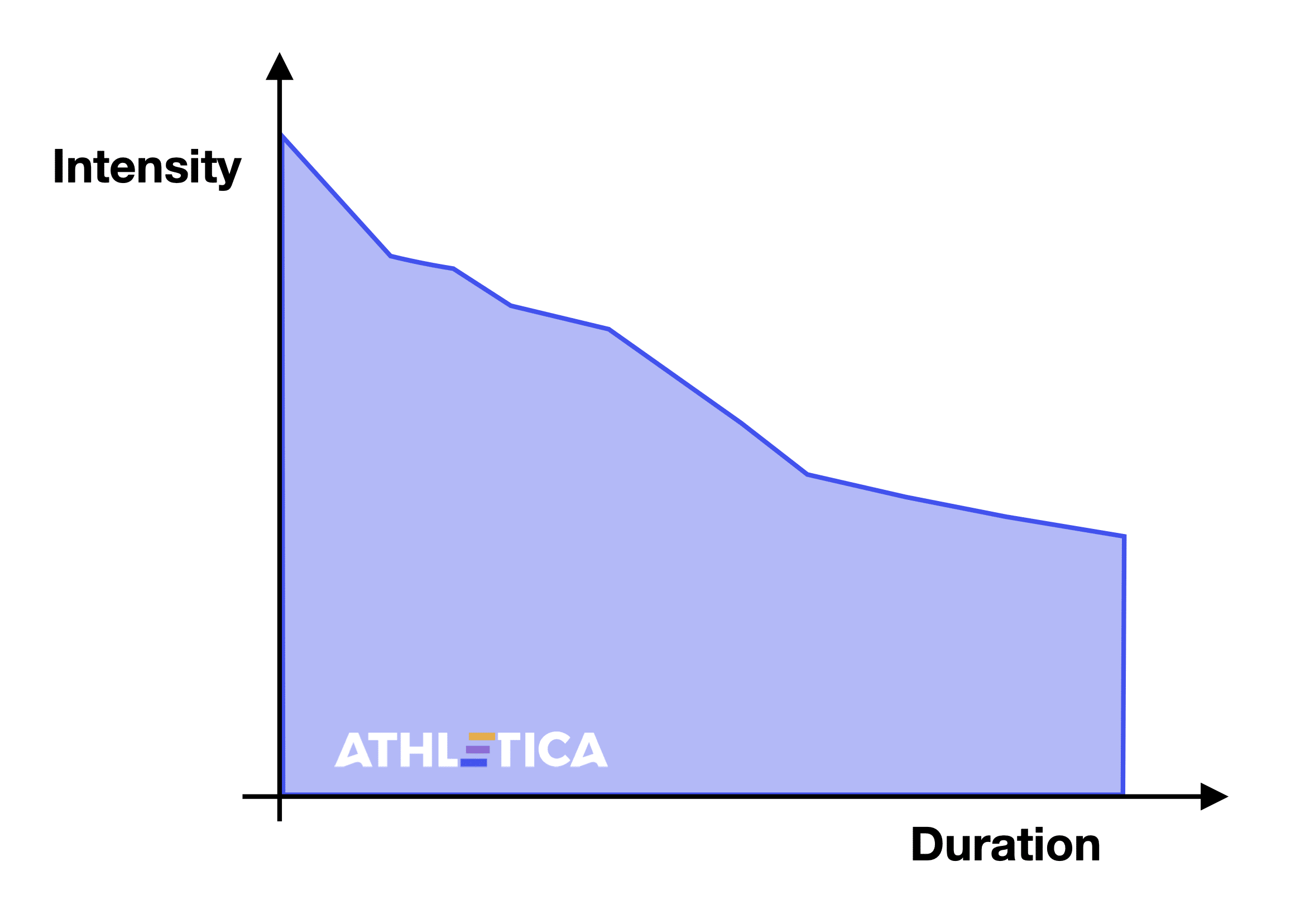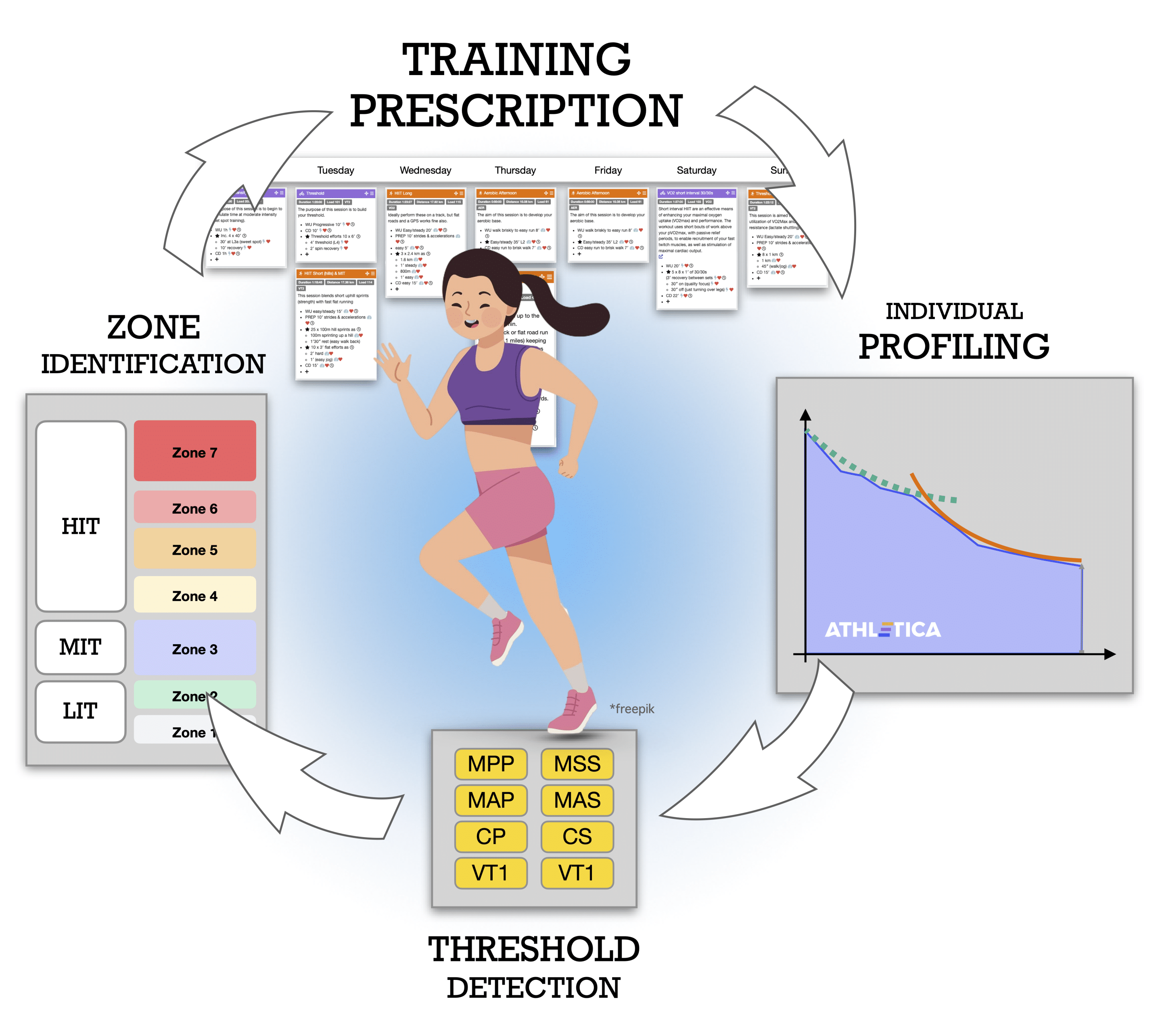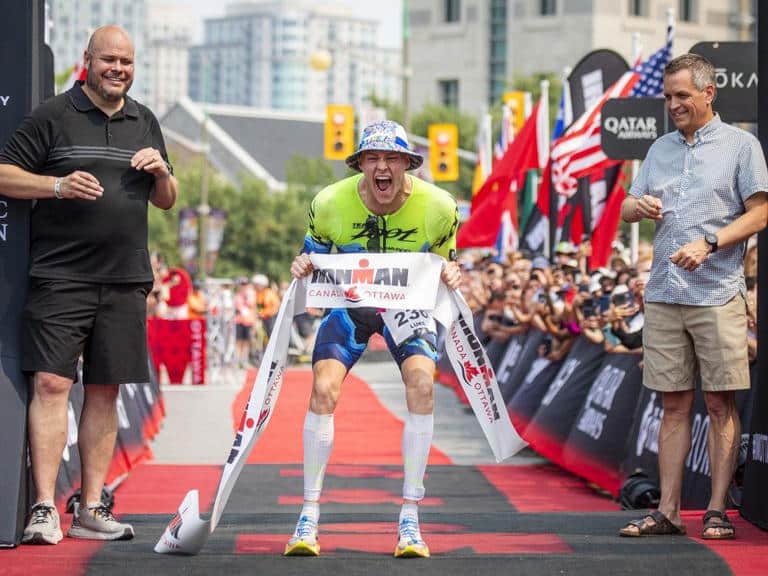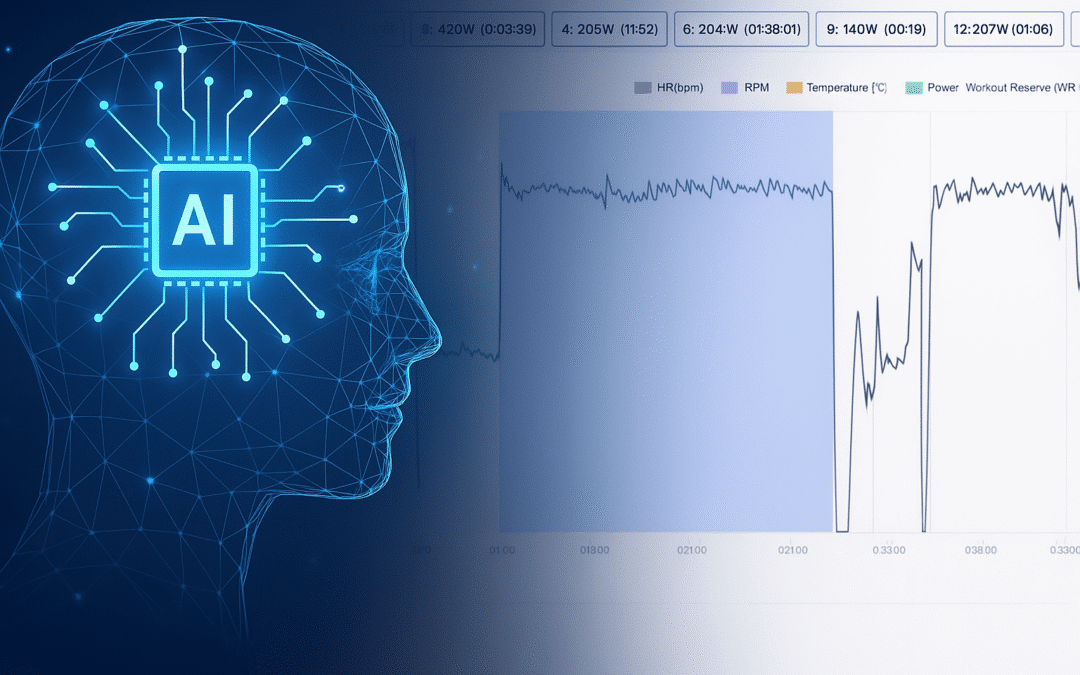In any area of life—business, academics, or sports—establishing a “system” is crucial for progress. Expert coach Vern Gambetta highlighted this in a recent episode of the Training Science Podcast, quoting James Clear from Atomic Habits: “You do not rise to the level of your goals. You fall to the level of your systems.”
In the context of endurance training, a system includes the tools, rules, and methodologies you use to become a better athlete. It’s not just about training sessions; it could be something you learn about yourself—a practice, a notion, an exercise, or a renewed awareness of your potential.
What many might not realize at first glance is that Athletica is more than just an AI training program generator. Athletica is a system— a science hub that provides athletes and coaches a unique opportunity for growth by leveraging sport and exercise science principles. Providing tools is only half of the story, especially for those unfamiliar with their use. At Athletica, we don’t just hand you a screwdriver; we teach you how to use it and track your improvement.
One key aspect of Athletica is its seamless integration with your natural workout routine. It assesses your training progress without interrupting your activities, capturing your efforts without formal testing.
This blog post describes the latest advancements in the Athletica platform and how we leverage innovative modeling techniques for comprehensive performance assessments. Following this assessment, Athletica tailors sessions to your unique profile, helping you maximize physiological adaptations and performance gains.
No Secret Sauce: Just In-Context Knowledge
Athletica leverages the maximal mean power/speed profile to track your progress. This profile describes your ability to sustain a given exercise intensity, naturally declining with effort duration. Simply put, the stronger the effort, the less time you can sustain it—an intuitive truth based on principles of energetics known for a century (Hill, 1925).

By analyzing your honest efforts during regular training sessions, Athletica accurately measures your power/pace profile, using this data to customize your training zones. This eliminates guesswork and provides personalized, precise training intensity prescriptions without formal testing.
Athletica uses machine learning to estimate key exercise thresholds traditionally achievable only in a laboratory:
- First Ventilatory Threshold (VT1)
- Critical Power/Speed (CP/CS)
- Maximal Aerobic Power/Speed (MAP/MAS)
- Maximal Peak/Sprinting Power/Speed (MPP/MSS)
VT1 and CP/CS thresholds are derived from maximum efforts between 3 minutes and 1 hour, while MAP/MAS and MPP/MSS thresholds come from efforts between 10 seconds and 5 minutes. These thresholds are used to help:
- Understand the type of athlete you are.
- Set your training zones.
Different Horses on the Same Track
Athletica compares your thresholds with “normal” benchmarks to determine your athlete type. Are you a “diesel engine” distance runner, a twitchy sprinter with predominant fast-twitch fibers, or somewhere in between?

Athletica also evaluates if you haven’t pushed enough recently, possibly due to reluctance towards certain training or the need for specific aspect improvement. For example, if the ratio between your critical power/speed and your maximal aerobic power/speed is too low (e.g. CP is less than 70% of MAP), you may need to increase training volume. Conversely, if this ratio is too high (e.g. CP is more than 95% of MAP), more VO2MAX work might be of benefit. Athletica covers all bases, helping you work on strengths and weaknesses to become a better endurance athlete.
The Training Zones
Athletica uses your thresholds to identify training zones and adjust session intensities. Athletica’s 7-zone scale is shown below.

The 7-zone scale includes:
- Zone 1 and 2: Very light to “somewhat easy” work, below 82% of your maximum HR (HRMAX).
- Zone 3: “Tempo” or “sweet spot” sessions, below ~88% HRMAX.
- Zone 4 and 5: High-intensity training, from critical power/speed to maximal aerobic power/speed.
- Zone 6: Supra-maximal efforts, above maximal aerobic power/speed but below maximal peak/sprinting power/speed.
- Zone 7: All-out sprints, leveraging the anaerobic power reserve.
These zones drive the physiological adaptations you aim for.
How Athletica Delivers the Magic in its System
To simplify, we categorize training into:
- Low Intensity Training (LIT) (Zones 1-2)
- Moderate Intensity Training (MIT) (Zone 3)
- High Intensity Training (HIT) (Zones 4-7)
This forms the foundation of classical polarization training theory.
Athletica prescribes significant LIT, constituting 75–80% of your training, to build aerobic base and movement economy. MIT sessions accumulate Zone 3 work, and HIT sessions target Zones 4-7 for high-intensity intervals and VO2MAX improvements.
Putting it All Together
Training with Athletica means your efforts build your unique power and speed profiles. These profiles help detect physiological thresholds, assess performance potential and determine fitness status. Your thresholds define your training zones, which, alongside an Athletica-modified impulse-response model (Banister, 1975) guide your personalized training program.
In this continuous refinement cycle, Athletica tracks your progress, highlighting strengths and weaknesses. Your training sessions update dynamically, ensuring a unique, tailored program that evolves with you.

Additional readings
Banister, E. W., Calvert, T. W., Savage, M. V., & Bach, T. (1975). A systems model of training for athletic performance. Australian Journal of Sports Medicine, 7(3), 57-61.
Buchheit, M., & Laursen, P. B. (2013). High-intensity interval training, solutions to the programming puzzle: Part I: cardiopulmonary emphasis. Sports medicine, 43(5), 313-338.
Bucheit, M., & Laursen, P. B. (2013). High intensity interval training, solutions to the programming puzzle. Part II: Anaerobic energy, neuromuscular load and practical applications. Sports Med, 43(10), 927-954.
Hill, A. V. (1925). The physiological basis of athletic records. The Lancet, 206, 481-486.
Sandford, G. N., Laursen, P. B., & Buchheit, M. (2021). Anaerobic speed/power reserve and sport performance: scientific basis, current applications and future directions. Sports medicine, 51(10), 2017-2028.
Seiler, S. (2010). What is best practice for training intensity and duration distribution in endurance athletes?. International journal of sports physiology and performance, 5(3), 276-291.
Tønnessen, E., Sandbakk, Ø., Sandbakk, S. B., Seiler, S., & Haugen, T. (2024). Training Session Models in Endurance Sports: A Norwegian Perspective on Best Practice Recommendations. Sports Medicine, 1-19.
Weyand, P. G., Lin, J. E., & Bundle, M. W. (2006). Sprint performance-duration relationships are set by the fractional duration of external force application. American journal of physiology-Regulatory, Integrative and Comparative physiology, 290(3), R758-R765.






